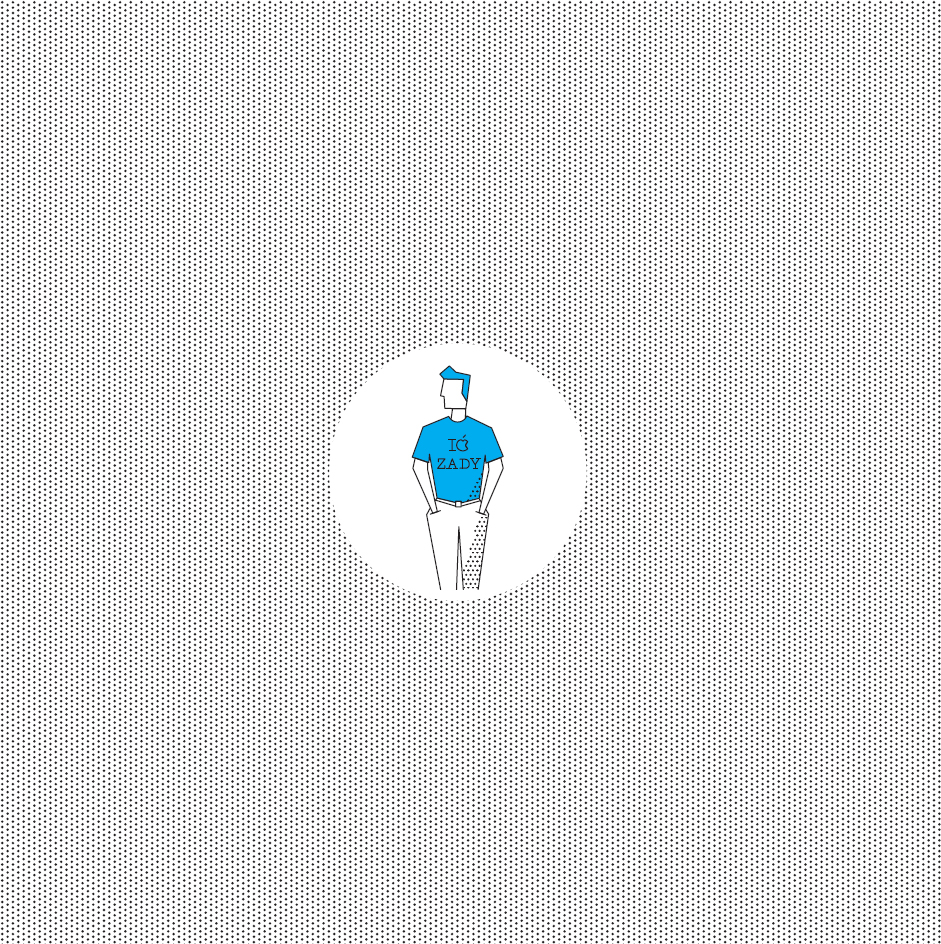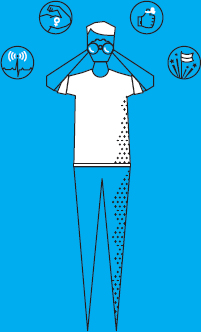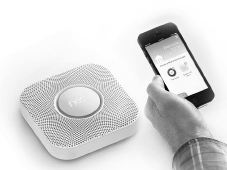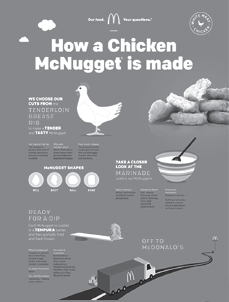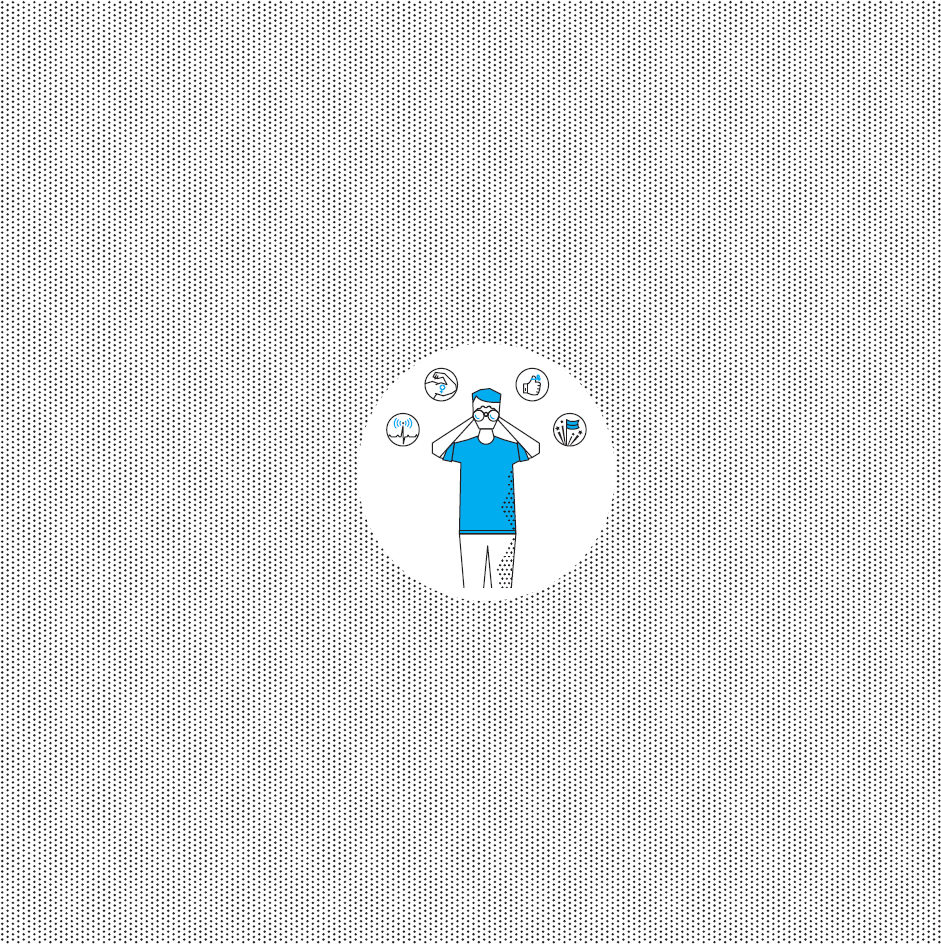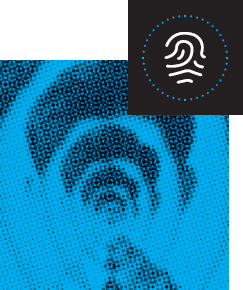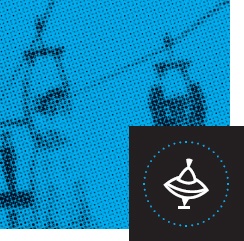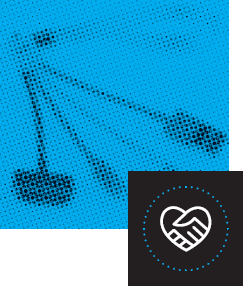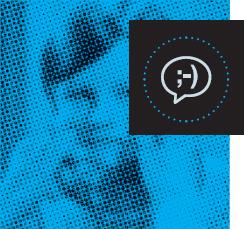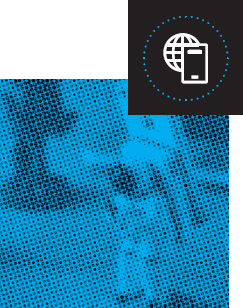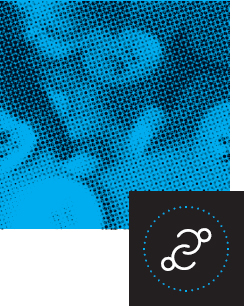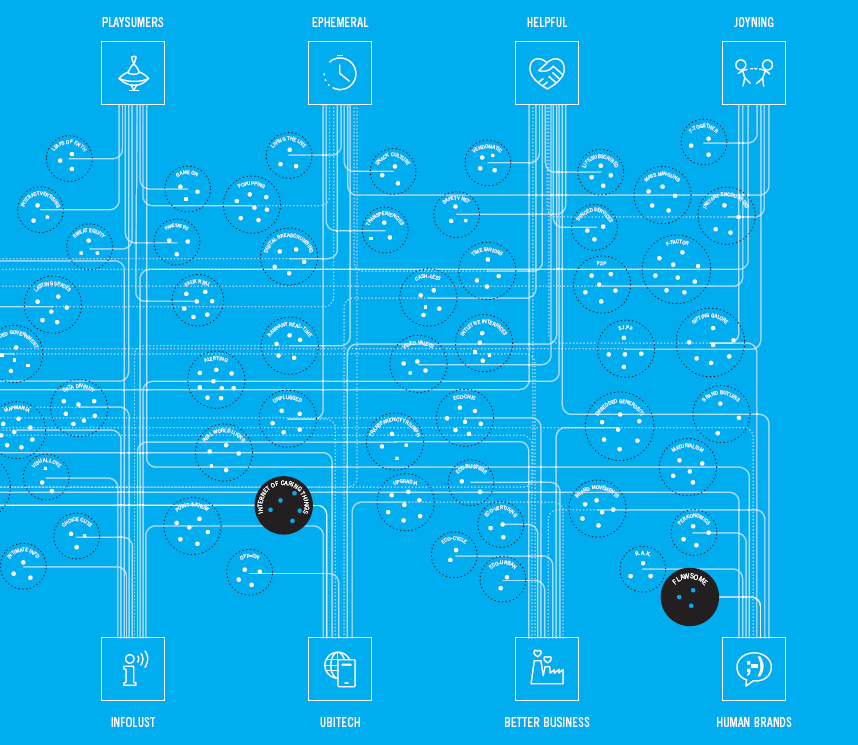So relentless hyper-competition and accelerating consumer expectations have you constantly playing catch-up.
Consumer trends take the overwhelming nature of these forces and turn them to your advantage. Understanding and tracking trends gives you a handle on the information onslaught and a framework through which to understand rapid change.
Let's start by unpacking what trends are and how to spot, track, and process them in a meaningful way.
[2.1] Trends 101 Where to start with consumer trends.
[2.2] Watch Businesses First, Customers Second The counterintuitive secret to customer-centricity.
[2.3] Trends in the Wild Four trends and how we identified them.
[2.4] Building a Trend Framework Why you need one; how to build it; sharing ours.
The moment you say “trends” you step into a minefield of potential confusion. Are you talking about aging populations, the rise of China, or the next breakout digital device? Or are you about to forecast next season's hottest color?
Somewhat unsurprisingly, consumer trends are about consumers: how they behave, what they want, and how they view the world around them.
More importantly for business professionals, trends unlock opportunities. Understanding change—in people's behaviors, attitudes, and expectations—better places you to deliver what they want, not only now but in the future, too.
So, let's get going and look at the fundamental elements of trends.
TRENDS DEFINED
What we mean when we talk about trends.
A CONSUMER TREND IS A NEW MANIFESTATION AMONG PEOPLE—IN BEHAVIOR, ATTITUDE, OR EXPECTATION—OF A FUNDAMENTAL HUMAN NEED, WANT, OR DESIRE.
A new behavior. A new attitude or opinion. A new expectation. Any of these can form the basis of a consumer trend.
Underneath our definition lies a model that juxtaposes multiple dimensions of external change against human nature, which, at its most fundamental, doesn't change.
But it's not enough to simply understand a trend. You want to know where and how trends will emerge and crucially, which opportunities they will present to you.
THE SECRET TO SPOTTING TRENDS AND BEING READY TO ACT ON THE OPPORTUNITIES THEY PRESENT YOU LIES IN IDENTIFYING POINTS OF TENSION BETWEEN WHAT PEOPLE WANT AND WHAT IS CURRENTLY AVAILABLE.
THE FUNDAMENTAL TREND ELEMENTS
Three core components. One point of tension to identify and resolve.
There are three fundamental elements that drive all trends:
- [1] Basic needs
- [2] Drivers of change
- [3] Innovations
The secret ingredient of trends, however, isn't actually any one of these elements. Rather, it's the tension created as the three elements interact with one another.
This tension can best be identified by understanding customer expectations and by looking for gaps between what customers want—both now and in the future—and what they are currently being offered.
We'll go into this idea in more detail in the pages that follow (and indeed, throughout much of the next chapter), but ultimately understanding this enables you to hit the sweet spot of trend-driven innovation when you beat customers' expectations and resolve this tension.
[1] BASIC NEEDS AND WANTS
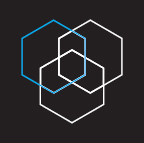
We're all human. Trends—and behavior more broadly—are ultimately rooted in our basic, fundamental, rarely-if-ever-changing human needs, wants, and desires.
Identifying these basic needs and desires isn't rocket science or even deep social science! They are the forces that have been shaping personal and social relations for centuries, if not millennia. Think about the emotions and passions that drive characters in the great works of literature. Or just listen to popular music, or watch any trashy movie. The same themes crop up again and again, precisely because they are so universally relevant and timeless.
Identifying underlying human needs is central to spotting and/or understanding any consumer trend.
Where to start when looking for these basic human needs, wants, and desires? How about the ones on the opposite page?
[2] DRIVERS OF CHANGE: SHIFTS AND TRIGGERS

On the other hand, there are no trends without change. Savvy and switched-on business professionals constantly ask “what's changing?” and look at how it might be possible to service people's basic human needs and wants in novel, exciting, and better ways.
To analyze change, think in terms of Shifts and Triggers.
Shifts are the long-term, macro changes (such as urban transition, aging populations, and climate change) that play out across years or even decades. While not consumer trends themselves, these shifts do and will continue to shape both the nature and direction of consumer trends.
Triggers are more immediate changes that drive the emergence of a trend. These can include specific technologies, political events, economic shocks, environmental incidents, and more. For example, the Snowden/NSA revelations caused many to re-evaluate the trade-offs they were making when sharing their personal data with “free” online services.
Identifying drivers of change:
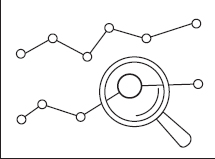
DATA
Rapid growth or sudden shifts are worth attention, no matter how small the absolute numbers. Don't ignore something just because it is 1 percent of the market (or even of your sales or users). If it doubles, then quickly doubles again, ask why.
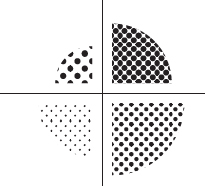
FRAMEWORKS
Strategic frameworks can be useful tools to analyze external change. Check out the PESTLE model (Political, Economic, Social, Technological, Legal, and Environmental) and its various adaptations.

NONCONSUMER TRENDS
Other types of trends, from what's popular on social networks to hot new product categories, can also shine a light on social change and inform your thinking about consumer trends (see Section 2.2 for more on nonconsumer trends).
[3] INNOVATIONS
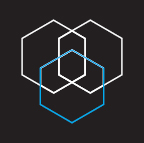
Innovations aren't trends. But without examples of customer-facing innovations tapping into it, a trend can't be said to exist fully (it's either a futurist's flight of fancy or an as yet unvalidated opportunity).
You can't identify a trend for more irreverent, “human” brands without businesses like Ben & Jerry's or Old Spice delighting customers. You can't describe the rise of the “on-demand economy” without the existence and rapid growth of services like Uber or Instacart. You can't have a zoo without animals!
So, the third element of every trend is innovations: the startups, new products, services, experiences, and campaigns that are resolving points of customer tension and creating new levels of customer expectation.
Of course, when it comes to trends, there are “good” and “bad” innovations. On-trend innovations (shown previously) will be those that hit the sweet spot and cater to people's basic needs while anticipating or responding to external change.
TRENDS VS. FADS
We're always asked what the difference is. In short: what we do is a trend; how we do it can be a fad. Trends arise when external change unlocks new ways to serve fundamental human needs. The specific products and services that people use may indeed be mere fads, even those that sit firmly in the on-trend sweet spot.
Take a service like Tinder. The Facebook-powered mobile dating app, where users can only message each other if they both “swipe right” to signal mutual interest, exploded in popularity during 2013 and 2014, announcing in October 2014 that it was seeing over 1 billion swipes and 12 million matches a day.
Zoom out a little: the web unlocked new ways to serve the age-old desire for human connection; next, the convergence of social networks and smartphones helped shift expectations around instant connection and social gratification from the online world into people's real offline social lives, too. Those are trends, with Tinder as a hugely successful and novel example.
Is the service a fad, or will single young urbanites still be swiping furiously in 2025? Who knows? We don't have a crystal ball. It's not important anyway: trends aren't about the success or failure of individual innovations later in this chapter.
However, will the desire for instant connection and social gratification continue? Yes.
Will there continue to be exciting new opportunities for those who cater to that desire? Absolutely!
EMERGING EXPECTATIONS
The target of every on-trend innovation.
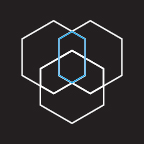
The three fundamental elements—basic needs, external change, and innovations—will help you understand trends. But sensing where and how these come together to form new levels of customer expectation will help you act on trends. That's because identifying what the people embracing the brands, products, and services that embody the trend now want and even expect is the best way to spot the potential opportunities within a trend.
We've already seen how customers have increasingly high expectations of rising quality, positive impact, and personal expression.
Another example of emerging expectations is evident around online piracy of media content. In 1999, Napster took advantage of faster and more widespread Internet access (a prolific driver of change) to set expectations around infinite choice and free access to media. It took until 2008 for Spotify to offer customers a legitimate outlet for that expectation, finally supported by a music industry willing to tolerate free streaming. Netflix axed its limit on the volume of content its subscribers could stream the same year. It had taken nearly a decade to resolve the tension and resulting expectations that digital distribution and (illegal) file-sharing had created.
Clearly there are many factors at work (others tried to launch streaming services during that decade). But identifying an unmet customer expectation will make it clear which points of tension you should focus on resolving.
The next chapter looks in detail at how you can draw insights from other organizations' innovation efforts to anticipate what your customers will want.
What if you can't see any innovations that are catering to the new customer expectation you've identified? You might just be close to the holy grail of trends: when it is your innovation that starts a trend by setting a new level for customer expectations that other innovators have to work to meet!
WHAT DO THE PEOPLE EMBRACING THE BRANDS, PRODUCTS, AND SERVICES THAT EMBODY A TREND NOW WANT AND EVEN EXPECT?
> NEXT
Having read this chapter, you now:
- [1] Understand the three fundamental elements of a trend: basic human needs, change (both longer-term shifts and short-term triggers), and innovations;
- [2] Can identify points of tension and emerging customer expectations, which are where the key opportunities lie when it comes to trends; and
- [3] Know how to start a trend!
Next, learn how to apply this model to spot emerging consumer trends via an analysis of new business innovation.
As everyone from Henry Ford to Steve Jobs knew, turning to customers for insights about their future desires is limiting at best, and can be downright misleading.
If there's one secret to trend watching, however, it is that you can know what customers will start to want. Not by asking them, but by looking at the businesses and products that people are lavishing love and attention on now.
These are the businesses—from well-known leaders such as Apple and Whole Foods, to niche brands such as Zady, a “lifestyle destination for conscious consumers,” to new products such as the Pebble smartwatch, which, as we saw previously, raised $10.2 million in 30 days on Kickstarter—that drive the Expectation Economy by triggering points of tension and creating new expectations among consumers.
Indeed, it's because of the Expectation Economy that you should aim to build a culture of customer-centered innovation, not customer-led innovation.
Customer-led cultures are reactive and too self-consciously explicit about putting the customer first. Customer-centered cultures, on the other hand, are grounded in a deeply empathetic understanding of customer needs and wants, but also grant an organization the freedom to make the unexpected and often unasked-for leaps forward that will lead to long-term success.
Let's find out how. . . .
FUTURE VISION
Business innovation as a source of future-focused insight.
Businesses typically rely on two main sources of customer insight. There's data science, where the bigger the data collection and analysis the better. Then there are the social sciences, where deeper and richer is better.
Both are valid. Both focus on customers. However, subscribe to the model of trends being driven by three fundamental components—basic human needs and wants, external change, and innovations—and you'll find four clear reasons why it's smarter to look to businesses first, customers second when it comes to generating future-focused insights:
- Expectation Transfer and the porous nature of customer experience.
- Bets on the Future and tapping the wisdom of the business crowd for customer insight.
- Spotting vs. Creating and why, when it comes to trends, spotting is creating.
- Revolution from Evolution and how innovation-led insights can inspire radical progress.
[1/4] EXPECTATION TRANSFER
When it comes to customer needs, wants, and expectations, tension is created through experience.
Consumers use Apple devices and enjoy the quality finish and the seamlessness of them “just working.” They walk into an H&M store to find racks of “good enough” quality clothing at rock bottom prices. They travel economy on Singapore Airlines and experience first-class service.
The challenge facing businesses is that these experiences don't simply sit neatly within customers' mobile/fashion/retail/travel mental silos (as they do in the minds of many business professionals).
Instead, someone riding in a car will wish the in-car entertainment system was as intuitive to use as their iPhone. Someone browsing beauty products will expect to find that sweet spot of price and quality. Someone stopping for a coffee will bristle at anything less than first-class customer service.
Indeed, once people have experienced Apple's design, H&M's affordability, or Singapore Airlines' level of service, it's hard to tolerate “normal” (i.e., lower) standards.
The scariest part of this whole scenario for businesses is that with information traveling more freely than ever, it creates an almost universal familiarity with the standards set by the best-in-class. This means customers' expectations are frequently raised without them having even personally experienced “the best,” but merely through knowing what standard the “best” represents.
[2/4] BETS ON THE FUTURE
Every new business venture is a bet on the future that has been put out into the market in order to cater to both current and anticipated customer needs and wants. Using innovations to spot trends therefore allows you to tap the collective intelligence of the business crowd for your future-focused customer insight. Look for multiple actors (preferably in a variety of sectors and/or markets) that are placing similar bets. Analyze these bets through the lens of the fundamental needs and wants that underpin them, and you can draw powerful insights on where customers are headed.
For example during 2014: Intel committed to remove “conflict minerals” from the production of its processors; electric car pioneer Tesla stated that it would not initiate patent lawsuits against anyone using their technology in good faith; drugstore chain CVS removed cigarettes from its stores, despite their sales generating over $2 billion in annual revenue.
These moves appear unconnected at first. But for trend watchers, to witness businesses voluntarily and pre-emptively making certain sacrifices is an interesting signal. These businesses were placing bets that “doing the right thing” (environmentally, socially, or for people's health) would be the right economic decision too.
And while the results of these specific bets remain to be seen, the repeated nature of them should at the very least encourage you to question if you should be placing a similar bet, too.
USING INNOVATIONS TO SPOT TRENDS ALLOWS YOU TO TAP INTO THE COLLECTIVE INTELLIGENCE OF THE BUSINESS CROWD.
[3/4] SPOTTING VS. CREATING
Of course, you might ask, “Is looking at business innovation to assess where customers are headed forward-thinking enough?” In other words, do businesses respond to customer needs and wants, or create them?
It's a valid question and the truth is: businesses do both.
Even innovations from the earliest pioneers will only succeed if they address certain unmet needs or cater to new behaviors. As such, these innovations are responding to consumer behavior, at least initially.
However, once certain customers' needs and wants are satisfied in a novel way and the innovation becomes more widely experienced or known, then the initially pioneering brands and innovations quickly create new customer expectations (both in other people and, more importantly, in other industries and markets, via the expectation transfer process described above).
Take for example the pioneering U.S.-based eco-friendly cleaning product and personal care brand Seventh Generation. Driven by a belief that a more sustainable approach to business was essential, in the early 1990s it placed what turned out to be a winning bet on the future. As founder Jeffrey Hollender says, he was “solving a problem that people didn't know existed.”
As more and more people became aware of the underlying problem, the expectation—demand, even—for sustainable solutions increased. This then fueled a virtuous cycle in which the scale of the winning nature of Seventh Generation's bet also then increased, too.
Since then, a combination of ever-greater awareness and the continued success of more environmentally responsible brands has driven an even greater expectation of—and even higher demand for—eco-friendly alternatives in almost every product category. And this demand is being serviced by a host of brands, from Chipotle (with its fast-but-responsible-food) to Tesla (with its all-electric sports cars) to Zady (with its locally produced “slow fashion” output). Indeed, there continue to be endless opportunities to create new environmentally and socially responsible businesses. Jeffrey Hollender's latest venture is Sustain, a condom brand that takes a full-spectrum approach to ethical and ecological standards, from using certified fair trade and pesticide-free latex to donating 10 percent of its pretax profits to female-focused health and family planning services.
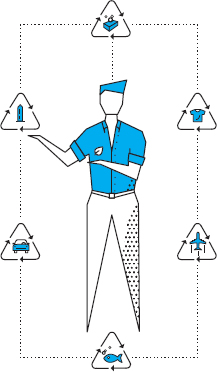
[4/4] REVOLUTION FROM EVOLUTION
If, however, it's the businesses that respond most rapidly to emerging customer expectations that end up creating trends, then surely the answer to getting ahead is to get ever closer to customers, either via data or social science? Not so fast:
On the quantitative side, while more/better/faster data can lead to valuable insights, data-driven innovation is often incremental in nature. Data is fantastic at validation and optimization, but bad at generating the radical and unconventional connections that underpin many successful innovations.
On the qualitative side, in reality it's not as simple as a pioneering innovator responding to customers' neatly expressed needs and wants. After all, it's impossible to go back and find “pure” customer needs and wants that haven't been shaped through experience and awareness of existing products.
Spotting the innovations that are exciting customers and analyzing them using the fundamental elements of trends is also disruptively faster and cheaper than deep ethnographic fieldwork. Plus, insights drawn from a diverse range of innovations in a variety of markets and sectors will be both novel and robust.
That's not to say that data-driven innovation and ethnographic research aren't valuable. Far from it. The insights they generate can be the difference between success or failure. But you shouldn't rely exclusively on these two approaches. Instead, look to complement them with customer insights generated from watching trends and innovations.
Finally, remember that even the most visionary innovators don't conjure something up from nothing. All innovators build on, adapt, extend, combine, remix, and redeploy things that already exist. Seventh Generation wasn't the first eco-friendly cleaning and personal care brand. Walmart wasn't the first supermarket chain. Kickstarter wasn't the first crowdfunding platform. The iPhone certainly wasn't the first web-enabled cell phone. But all resolved meaningful tensions and set new customer expectations (which then created new points of tension for their competitors' customers).
Indeed, understand why game-changing business innovations are exciting customers—and extend that to identifying broader trends—and you'll be able to consistently identify the next wave of (as-yet-unmet) customer needs and the promising new business opportunities that they present.
Our job is to figure out what they're going to want before they do. . . . People don't know what they want until you show it to them. That's why I never rely on market research. Our task is to read things that are not yet on the page.
– Steve Jobs
INNOVATION CLUSTERS AND TRENDS
Let's now run through exactly how to identify consumer trends:
[1] Look for “clusters” of multiple innovations that indicate a number of actors putting similar bets on the future and that are creating new levels of customer expectation.
[2] Don't limit your search to product innovation. We look for four types (see opposite). These are, of course, neater in theory than in practice! For example, in early 2015 Marriott Hotels launched an initiative offering guests at selected hotels and resorts free use of GoPro cameras to capture their holiday memories. Guests were encouraged to share their content across social media using the hashtags #travelbrilliantly and #viajegenial in order to be featured on the brand's dedicated site and win prizes. This innovation spans all the four types: supporting the vision of travel as being about memorable experiences, tapping into a free, crowdsourced model that is powered by a complementary rental service, in order to generate authentic marketing messages.
[3]The more diverse the range of innovations you spot, the more reliable your insights about future customer needs and wants. Look for innovations that show how the trend is playing out in different contexts. How are startups catering to the trend? How does that differ from big multinationals?
We'll explore this in more detail in the next chapter by showing how seemingly disparate innovations in different industries and markets can be used to identify emerging consumer trends.
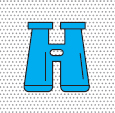
VISION
How are the shifts driving the trend manifested in the long-term visions of companies at the forefront of the trend?

PRODUCT/SERVICE/EXPERIENCE
What new products and services are emerging as a result of the trend?
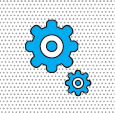
BUSINESS MODEL
Is the trend unlocking whole new business models?

MARKETING
How are brands reflecting the trend in their marketing and campaigns? How are consumers responding?
THE BUTTERFLY EFFECT
Don't dismiss small, niche, or seemingly “ridiculous” innovations.
You can witness powerful early signals about where customer expectations are headed by looking at extreme cases. Consider the following examples:
Miya's Sushi, a restaurant in New Haven, Connecticut, offers a sushi menu featuring only items made from nonnative, invasive species that are threatening the shellfish that the local fishing economy relies on. Thus eating (and enjoying) these dishes offers customers a sense of positive impact and totally reverses the quandary many people find themselves in when it comes to eating sustainably sourced seafood.
Belgian fashion brand Honest By was launched by Bruno Pieters, an ex-Hugo Boss art director, in 2012. The label takes an extreme approach to transparency, publishing full information about material and supplier sourcing, shows exactly where and how the items are produced, and even gives an itemized breakdown of the material, labor, and distribution costs (and therefore full details of the wholesale and retail markups).
Google announced that Project Ara (its modular cell phone development initiative) would pilot in Puerto Rico in 2015. Customers can purchase a central base unit and can then add, replace, and upgrade specific modular components (such as a new camera unit) individually rather than needing to purchase an entirely new device.
Will these concepts become standard business practice? Unlikely, at least in the short term. But they do give valuable information about certain customers' needs and wants. And, as we've shown, even customers who don't demand such extreme levels of sustainability, transparency, or flexibility will start to have their expectations raised by the mere knowledge that there are businesses that are offering such benefits. In the same way that famously the flutter of a butterfly's wings can contribute to a hurricane on the other side of the world, so too can a small, local sushi restaurant contribute to the shifting expectations of your customers.
Indeed, whether you like or are excited by an innovation—or even think it makes sense—is irrelevant.
Too often senior (in both senses of the word!) professionals dismiss things that appear too niche or frivolous. From Twitter to Snapchat, Netflix to Airbnb, the online world shows that concepts that can seem half-baked, if not downright bizarre at first, can quickly spread beyond their initial audiences and reach millions.
Don't dismiss novel concepts that are exciting people, even if they might seem strange or irrelevant to you. Try and understand why other people are embracing a new concept. Then think how you could take the underlying insight and run with it.

FAILURE
And why it's irrelevant.
Looking at clusters of innovations can provide powerful signals into future customer needs, wants, and expectations. But don't let skeptics question the insights you draw should an example fail. Just as an isolated innovation isn't itself a trend, trying to draw broad conclusions based on the success or failure of individual innovations (or even whole businesses) won't work either.
A single example is simply one data point, a manifestation of the underlying trend within a specific context, for specific customers, in a specific market and sector.
There are simply too many variables (execution, culture, logistics, financing, and more) at work to draw conclusions about entire trends from one or even a handful of examples.
Plenty of peer-to-peer startups failed in recent years. But try telling the founders—and users—of Airbnb that this invalidates the ongoing trend toward peer-to-peer consumerism, when on New Year's Eve 2014 the service saw 550,000 guests stay in properties booked via the site, up from 2,000 just five years previously.
Indeed, there are endless examples of business innovations that failed, despite being favorably aligned with underlying trends. The lesson from all this? Find clusters of multiple and diverse innovations, extract the underlying customer-centered insight, and look beyond the success or failure of a single innovation.
FAILURE GALLERY
While these initiatives stalled, the trends (and opportunities) behind them live on.
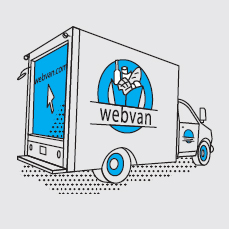
WEBVAN
The online world has its fair share of spectacular flameouts that for multiple reasons failed to resonate or stick with consumers. One of the most notable was online grocer Webvan, which went from a $375 million IPO in 1999 to bankruptcy in 2001. Meanwhile, over in the U.K., Ocado followed a similar (if less ambitious) business model, went public in 2010 after eight years of operations, and had a market capitalization of approximately $4 billion at the end of 2014.

MYSPACE
The social media behemoth of its time (it was the most popular website in the U.S. in July 2006) went from being bought by News Corp. in 2005 for $580 million to being sold to a consortium including Justin Timberlake for just $35 million a mere six years later. Of course, during that time, social networks exploded to new levels of popularity, as shown by the mere 1.4 billion people that log onto Facebook every month.
BURGER KING
In the fall of 2013, Burger King looked to tap into the trend for healthy eating by launching Satisfries, french fries with 30 percent fewer calories and 40 percent less fat. However, by mid-2014, executives were admitting that the option would be removed from two-thirds of the chain's U.S. outlets after failing to find favor with customers. Does this mean customers aren't embracing healthy fast food? The success of chains such as Lyfe, where all menu items are under 600 calories, suggests otherwise. Founded by an ex-McDonald's executive, the restaurant chain expanded from a single Palo Alto outlet in 2011 to 14 outlets by the end of 2014.

MATTEL
Mattel opened a six-story flagship store in Shanghai in March 2009, also creating Ling, a localized version of its eponymous doll. However, slow sales resulted in the store closing within two years. Does that mean that all flagship stores and localized retail strategies won't win over Chinese customers? Of course not! Indeed, Mattel has since relaunched in China with a lower-priced violin soloist doll, better tailored to the aspirations of Chinese girls (and their parents).
CAR2GO
Carsharing service car2go (a subsidiary of automotive giant Daimler AG) enables customers to rent vehicles by the minute, without having to return them to the original pickup location. The service closed in London within 18 months of launch, despite signing up over 1 million customers in the 29 other cities it operated in as of February 2015. However, despite this failure, rival manufacturer BMW launched its similar DriveNow service in London in December 2014, observing that the British capital was the largest European market for Zipcar, the longer-term carsharing service.
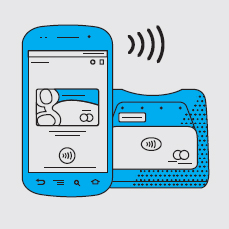
Google Wallet launched in 2011 promising to move U.S. customers away from plastic and toward a world where they could pay by swiping their NFC-enabled phones at the checkout. While not an outright failure, by late 2014, the service hadn't entered mainstream customer consciousness.
Meanwhile, Starbucks reported that their customers had made 7 million mobile payments per week in the final quarter of 2014.
WHERE TO SPOT TRENDS
A modern “bibliography.”
There's never been a more exciting time for eager, trend-driven innovators to be in business.
In a world where an almost infinite number of smart professionals and amateurs are not only spotting, observing, thinking, and innovating, but also putting their findings and insights online for all to see, deliciously valuable resources have never been more accessible, and many of them are free or dirt cheap. So, stop complaining about information overload and instead celebrate the incredible wealth of resources at your fingertips!
On the coming pages you'll find our go-to list of sources that we use to spot the new products, services, and businesses that are redefining consumer expectations and to uncover supersmart thinking on where customers, societies, and businesses are headed next.
![]() Head online for a full list of the sources that we're currently reading.
Head online for a full list of the sources that we're currently reading.
For all their struggles, daily newspapers and monthly magazines do still contain an astonishing number of relevant, well-researched, and well-written pieces on the latest local, regional, and global social, cultural, and business happenings.
 Niche/specialist media
Niche/specialist media
Then there is the vast universe of publications, newsletters, and blogs, providing a never-ending stream of information about every conceivable interest and subculture. Another tip: airline magazines always offer great snapshots of novel global happenings.
 Business publications
Business publications
Industries and sectors of particular note include technology and innovation, small business, marketing and advertising, retail, consultancies, designers, and architects.
 Company newsfeeds
Company newsfeeds
These are ideal for press releases about new offerings and initiatives. Agency blogs often contain case studies and reflections on client projects. Startup accelerators can also be a great source to discover new and disruptive concepts.
 Social media
Social media
Harvest influencers' newsfeeds for valuable insights. The public and directly accessible network of people available via Facebook, Twitter, LinkedIn, Instagram, and more is hard to beat, if well curated.
Set up a Google alert for “[your country's/industry's] first,” “plans to launch,” or other forward-looking phrases and watch the results roll in.
 Spotter network
Spotter network
We source a large portion of our content through our dedicated global network of trend spotters. While obviously it's our business to do so, anyone can create, gather, inspire, and lead a group of like-minded individuals nowadays. If you're within a big global company, why not start internally? Alternatively, reach out to people you know and set up a group in an existing social network.
 Crowdfunding sites
Crowdfunding sites
These offer an incredible window into a live, real-world innovation lab, where customer reaction to products can be validated before they have even been fully realized. Start by checking out Kickstarter and Indiegogo, the two largest sites.
 Conferences and events
Conferences and events
Physically attending will help you get hands-on with new technologies. But even when that's not possible, the abundant stream of readily available conference keynotes can let you hear from experts and practitioners for free.
 Thought leaders
Thought leaders
Insights from CEOs of game-changing companies are always worth reading, given that they think deeply about the future of the trends they are tapping into. Also look to venture capitalists and investors, whose very existence depends on their ability to make correct bets on the future.
 Academia
Academia
Dive into formal academic research as well as student projects, showcases, and competitions to find new ideas. Many student projects will be very raw, but watch out for those that are commercialized and developed.
 Daily life
Daily life
Listen and observe what people are raving about. Take an interest in the world around you. Browse shops and wander through malls. Travel as much as possible. Watch popular media.
 Comedy and satire
Comedy and satire
One final, often-overlooked gold mine: comedy and satire frequently produce perhaps the sharpest insights of all by shining a light on cultural shifts and behaviors in ways that few other sources can match.
THE VARIOUS TYPES OF TRENDS
Macro trends, political and economic trends, technology trends. Fashion and social trends. Then there is what's popular and “trending.” So many trends, so little time. . . .
However, these aren't consumer trends, in the sense that in themselves they are not new behaviors, attitudes, or expectations. Instead, “trends” such as these and those on the opposite page are often better analyzed via the Shifts and Triggers framework introduced previously.
For example, drones are not a consumer trend. However, the use of drones by businesses and consumers themselves is likely to heighten expectations of ultra-convenience, instant gratification, and being in control, as well as trigger new consumer behavior (like posing for a “dronie”).
Low-cost airlines are not a consumer trend. However, the ability to have novel experiences at low cost, the ratcheting up of middle-class lifestyles, and the exposure to global (or at least regional) cultures are increasingly widespread behaviors and set expectations that then underpin many consumer trends.
The aging population is not a consumer trend. But start looking at the products and services a healthier, more active, demanding, design-conscious older generation of customers is embracing, and thinking of the future opportunities that these desires present—and you'll be onto something!
Seven common types of nonconsumer trends:
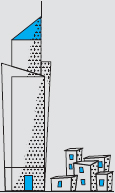
Social, political, and economic trends Growing economic inequality

Industry trends Android vs Apple / Low-cost airlines
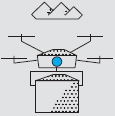
New product categories Drones / Virtual reality

Fashion trends Normcore / Beards

Macro trends Aging populations / Urbanization

Popular trends #trending / ALS Ice Bucket Challenge

Futurism Self-driving cars / Intelligent robots
> NEXT
Having read this chapter, you now:
- [1] Understand why analyzing business innovations is key to anticipating what customers will want next;
- [2] Know the four types of innovations to look out for: vision, business model, product/service, and marketing; and
- [3] Have a bank of resources that you can scour for the next wave of expectation-setting innovations.
In the following chapters, we'll show how to use this methodology to identify real-world consumer trends, and then how to bring these together into a comprehensive and practical Trend Framework.
Enough theory, let's see these ideas in action!
The trends featured in the following pages show how we connected the dots between innovations of diverse types—from startups to multinationals, from disruptive new business models to novel products, services, and campaigns—and uncovered a host of promising new consumer trends in the process.
Want more? Find our latest trends at trendwatching.com/trends
Released in October 2013, the Nest Protect is a two-in-one smoke alarm and carbon monoxide detector designed to be more intelligent than traditional devices. A spoken warning (rather than a noisy alarm) allows users to check whether the cause of smoke is serious. If it isn't, they can simply wave at the device to ensure the alarm doesn't activate, while the device also sends warnings about potential hazards or low battery power to an accompanying app.
Also in 2013, football helmet manufacturer Riddell launched its InSite Impact Response System. The smart helmets contain sensors that send an alert to coaches when they detect a significant impact, and medical professionals can then assess the player for signs of concussion.
Automaker Ford released a concept smart car seat in late 2013, too. ECG heart rate sensors can detect mid-journey heart attacks and engage assistance systems, while diabetic drivers can connect to an onboard glucose level monitoring system that alerts them to critical blood sugar level changes.
Then in 2014, Chinese technology giant Baidu released a set of prototype smart chopsticks, containing sensors able to measure the freshness of cooking oil, a common concern for Chinese consumers. The concept was originally created as an April Fool's spoof, but generated such interest that the company's engineers pursued it (read more about this innovative route to market in Chapter 6.
New technologies frequently arouse plenty of excitement. But they can also be powerful triggers for new consumer trends. Take the much-hyped Internet of Things, that is, the phenomenon of connecting objects—rather than just computers and cellphones—to the Internet. Amid all the breathlessness (a smart refrigerator!), we witnessed a subset of devices that had a clear and compelling mission: to actively protect their users' physical and mental well-being.
Here's how we used the fundamental elements to arrive at the INTERNET OF CARING THINGS trend:
- The application of new technologies to age-old and fundamental human needs (in this case, safety).
- Clear drivers of change: from improved efficiency and falling cost of adding wireless connectivity to physical objects to smaller, more personal and precise sensors.
- A compelling case for new expectations. Indeed, after Nest's upgrading of a previous bland and functional device and Riddell's smart football helmet, the question customers will ask when faced with objects without a in-built protective function will shortly be “why not?”
The varied nature of the “bets on the future” further supports the trend: the innovations address multiple insecurities (domestic, food contamination, physical injury, reducing motor accidents), the innovations span multiple sectors and markets, and there are multiple indicators of success (Google bought Nest for $3.2 billion, a spoof going viral, the significant and long-term investments made by Ford).
One final insight to take away: as with so many technology-focused trends, the most powerful element in the trend is not the technology itself, but more about how that technology enables innovators to service people's basic needs in new and better ways.
Facebook COO Sheryl Sandberg launched Lean In, a nonprofit organization to inspire women to achieve their goals in 2014. It partnered with Getty Images to launch an online image library designed to challenge stereotypes of women in stock photo footage. The Lean In Collection features 2,500 images showing women and girls in a positive or powerful light, for example playing soccer and leading business meetings.
Hair care brand Pantene launched a campaign in the Philippines highlighting the different labels given to men and women in the workplace. Where a male executive might be called “persuasive,” a female counterpart is called “pushy.” A father working late is labeled as “dedicated” while a mother doing the same is branded as “selfish.” The campaign attracted so much attention online that the brand turned it into an international media campaign.
July 2014 saw the first graduates from the Lady Mechanic Initiative, a Nigerian NGO sponsored by Coca-Cola that provides women with a three-year training program in automotive engineering and apprenticeships in local car garages.
Launched in late 2014, IAmElemental action figures are designed to reinterpret the traditional action figure while providing positive and empowering role models for young girls. The U.S.-created toys are named for different character attributes, such as Bravery, Energy, and Honesty.
Innovations that reflect changing social norms can be powerful indicators of emerging consumer trends. Clearly women's situations, rights, and opportunities differ enormously around the world. Despite this, we have seen a surge in brands supporting or even initiating challenges to gender stereotypes and female oppression.
Here's how we used the fundamental elements to arrive at the FEMPOWERMENT trend:
- The desire for equality is one of the most basic of human needs.
- Multiple overlapping and converging shifts and triggers, from changing workforce dynamics to modernization and globalization of cultural norms to high-profile positive and negative individual incidents.
- Increasing expectation that business responsibility extends to the full spectrum of social issues.
Note how trends don't respect borders. Deep-rooted human needs are increasingly universal. Meanwhile, the globalization of information means that a campaign can quickly spread globally, as Pantene's did.
Cast a wide net when tracking innovations: important trends will see multiple actors launching new initiatives, from nonprofits to entrepreneurs to the biggest multinationals.
Innovations can be both positive and negative. Challenging the current status quo (as Lean In and Pantene did) can be as clear a signal of a trend as offering a new vision of the future (as Coca-Cola and IAmElemental did).
We looked earlier at how Domino's tackled the issue of transparency and quality head-on. In a similar fashion, McDonald's Canada released a number of videos on YouTube answering user-submitted questions. In 2012, the chain shared details of how food photographers treated and manipulated products on photo shoots (answering a question about why items bought in-store never looked as juicy and appetizing as those in the photos!). The video received over 10 million views. A follow-up in 2014 gave viewers a tour of a meat processing plant that produces chicken nuggets, in response to a question asking whether Chicken McNuggets contain “pink goop”—a slimy meat product created from industrialized processing.
The Four Seasons luxury hotel chain's website features customer reviews from TripAdvisor and comments from Facebook and Twitter. Comments are placed prominently on hotel pages, and users can click directly through to the external content, often a rarity for luxury brand websites.
Finnish insurance company If has been running its “Kysy Vaikka!” (“Just Ask”) initiative since 2012. The company's website features existing customers who've recently made insurance claims. Those featured have agreed to be available from 9 AM to 8 PM via telephone or email to discuss their experience and level of satisfaction. Expectation-raising transparency indeed!
Surprising or counterintuitive initiatives are always interesting to trend watchers. In this case, it was seeing businesses serve up honest and unedited feedback to customers and address controversial issues head-on, steps that have previously often been considered too risky.
Here's how we used the fundamental elements to arrive at the FLAWSOME trend:
- Customers' basic need for honest, reliable information.
- Changes in the perception of business: from disgust at corporate (mis)behavior to the raw immediacy of online culture to the total transparency fostered by the avalanche of readily available reviews and ratings.
- These created an environment in which customers no longer expect businesses to be flawless. In fact, we saw people (whose reactions are now visible on social media) embracing FLAWSOME brands, and perceiving them as still brilliant despite their flaws (or perhaps because they acknowledged them in a “human” manner).
When witnessing a counterintuitive move, ask yourself what the organization in question is trying to communicate. And how are customers responding?
Also worth remembering: for every big shift (such as transparency), there will be “smaller” opportunities that innovation-centered trend spotting can identify. We'll explore this idea further and show how to structure a comprehensive Trend Framework in the following chapter.
Mumbai-based luxury fashion designer Masaba Gupta's House of Masaba has reinvented the traditional Indian sari with quirky, modern motifs and pop art prints that are targeted at young, affluent, urban female customers. Her black-and-white camera print sari has been worn by several Indian Bollywood celebrities.
The Botanique hotel, opened in late 2012 in the city of Campos do Jordão, is one of the most expensive in Brazil, with rates starting at $1,200 a night.
However, Botanique's library is stocked with Brazilian authors, and the food and even the wine list are also all produced locally. This would have been unheard of a few years before, when “local” was seen as downmarket and luxury strongly associated with foreign imports and brands.
Avi Arad, producer of various superhero films including Fantastic Four, Iron Man, and Spider-Man, is making a series of superhero movies about traditional Chinese culture, starting with Rise of the Terracotta Warriors. The films are a joint venture with China-based Seven Stars Entertainment.
Turkish soap opera Muhtesem Yüzyil (Magnificent Century) is a historical TV series about the longest reigning sultan of the Ottoman Empire, Suleiman the Magnificent, and his wife Roxelana. The Turkish show is hugely popular with audiences throughout North Africa, the Middle East, and Central and Eastern Europe and has an estimated audience of 200 million viewers.
Connecting tangible business innovations with the larger macroeconomic currents is another useful trend-spotting technique. These examples show emerging market audiences recasting symbols of national and cultural heritage and viewing them with pride (where they had previously often been downplayed if not denied as these markets strived to “catch up”).
Here's how we used the fundamental elements to arrive at the CELEBRATION NATION trend:
- An appeal to basic needs? Pride and recognition tick those boxes.
- Compelling shifts and triggers: from the macroeconomic shifts described above to the growing affluent, experienced, and increasingly confident younger populations in markets such as China, India, Turkey, and Brazil.
- An emerging tension centered on the disparity between the growing financial power of these “new” economies and the relative lack of modern, exciting home-grown cultural symbols.
Remember to keep your eye on trends once you've initially noticed them. After we had identified the CELEBRATION NATION trend, we then saw a host of innovations that catered to the desire for global audiences to learn about and experience the culture of the new economic superpowers. For example, Budweiser ran a campaign in 2013 promoting Chinese New Year in New York's Times Square. The campaign was in part aimed at Chinese expatriates and tourists, but also designed to raise awareness of the festival among Americans, too.

The bigger message is that consumer tastes and preferences are shaped by a whole range of factors. Change in one area (economics) will lead to change in other areas (culture). Can you think of other ways consumer behavior will change as a result of the global economic macro-trends that are taking place?
FLAWSOME... FEMPOWERMENT
A quick note on naming trends.
A quick thought on naming trends. We feel it's crucial to describe trends as imaginatively as possible. Sure, we regularly take flak about our names (FLAWSOME? Really?!), but here's why we do it:
Strange names arouse interest, prompt people to sit up and listen, and make them want to know more. A well-chosen name radiates the promise of a story. And if that name is unlike anything else (even if it's a little ridiculous), who can resist the desire to probe a little deeper and not miss out?
Names also create a common language. Teams will rally behind a named concept more easily than behind something generic. And speaking a common language saves team members time—they can refer to a project or trend name and instantly be on the same page.
So just how do we come up with our names? Early on, we were inspired by Faith Popcorn's approach: mix and match two or three words that define the trend, creating a new word that preferably hasn't been used by anyone else (a quick check on Google will reveal how unique a made-up word is).
So when we saw a number of businesses tackling extreme transparency head-on and being open and honest about their products and services (even if that meant exposing some of their flaws), we bounced some ideas around and came up with flawed + awesome = FLAWSOME.
Now you know exactly how to spot trends by identifying clusters of new business innovations and analyzing them in light of the other two fundamental trend elements—basic human needs and drivers of change—to recognize the customer expectations that are emerging from the interplay between them. This puts you in a great position to anticipate future customer needs, wants, and desires.
However, spotting individual trends is just part of the puzzle. Trends (and the resulting opportunities they unlock) are infinitely more powerful if you have a clear view of how they fit into the bigger picture.
That's where a Trend Framework comes into play. Building a robust and comprehensive framework means you can more effectively and efficiently capture and process the innovations you spot.
Let's examine how to construct one, and show you our Trend Framework as it is currently.
TREND HIERARCHY
From big to small: Mega-trends. Trends. Innovations.
A good Trend Framework allows you to put almost every innovation you spot into context.
We feed our trend insights into the three main “layers” shown in the pyramid on the opposite page. At the bottom are hundreds of innovations, clusters of which support the middle layer of individual trends. Above this sits the mega-trend* layer.
If our approach to spotting individual trends is bottom up (and driven by clusters of business innovations), then our approach to structuring our Trend Framework is top down (and driven by the big forces shaping the future of the consumer arena at large).
We look at two main forces when assessing our mega-trends:
[1] Human. These are the universally relevant human needs and wants that make up the first fundamental element of trend analysis. They include the search for social status, for connection, for self-improvement, for entertainment, for reliable and trusted information, and more.
[2] Environmental. The changes in the external environment that are central to the second fundamental element of trend analysis. Examples include increasing transparency, the shifting contours of global economic power, and the blurring of boundaries between producer and consumer thanks to creative technologies and platforms.
Whether internally or externally focused, mega-trends are big, slow-moving currents that remain broadly stable year-on-year, and can be applied across regions, industries, and demographics. People aren't suddenly (if ever) going to stop wanting information or no longer care about the impact of the products they consume.
That's not to say mega-trends don't ever change. In late 2014 we replaced our TRIBES & LIVES mega-trend (which captured trends related to specific customer segments and lifestyles) with the POST-DEMOGRAPHIC mega-trend later in this chapter. This reflected the fact that traditional customer segmentation—via conventional perspectives on gender, income, age, family status, and more—is increasingly inadequate in a world where people are constructing their identities more freely than ever before.
There you have it. Start by identifying clusters of innovations. Analyze these using the fundamental elements to uncover potential new trends. Orient these within a Trend Framework. Too abstract? Let's bring it to life by walking through our Trend Framework as it currently stands.
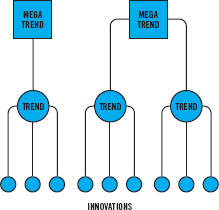
OUR TREND FRAMEWORK
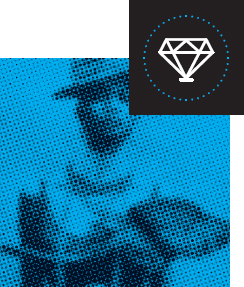
The relentless, ever-present force that underpins almost all consumer behavior.
The desire for recognition and status is a deep and universal human need. People in consumer societies derive much of their social status through the goods, services, and experiences they consume. And with so many choices available in modern economies, consuming becomes as much a statement about who you are, as to what you have.
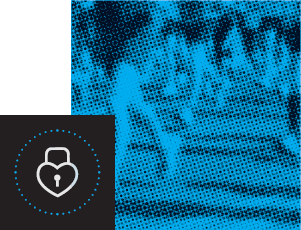
BETTERMENT
The universal quest for self-improvement.
Show us someone who doesn't aspire to self-improvement. The drive to better oneself can manifest itself in a number of ways, such as the desire for enhanced health, for greater knowledge, and the development of new skills. Businesses, products, and services that satisfy these needs will therefore simply appear “better” than those that don't.
YOUNIVERSE
Make your consumers the center of their youniverse.
The YOUNIVERSE is each person's consumption realm, where his/her preferences and tastes reign. Cater to an individual's YOUNIVERSE with brilliantly customized products, by enabling and encouraging personal expression, or by offering protection from harm. Whichever route you take, remember: each customer is unique.
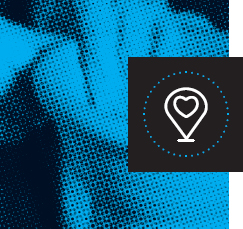
LOCAL LOVE
Why “local” is, and will remain, loved.
Despite globalization, despite online, place still matters. The local world is more tangible, more accessible, more visible, and therefore more “real.” Whether driven by a sense of pride, authenticity, convenience, and/or eco-concerns, customers will continue to embrace local products, services, and knowledge.
PLAYSUMERS
Who said business had to be boring?
Surprise. Entertainment. Amusement. People will relish brands that bring some much-needed fun to the business arena. Introducing competitive and participatory games, embracing humor, or celebrating the unexpected will make life—and consumption—less boring and simply more enjoyable.
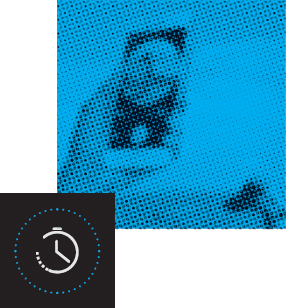
EPHEMERAL
Why consumers will embrace the here, the now, and the soon-to-be-gone.
Whether to satisfy their ever-shorter attention spans, their lust for the now, or their craving for real, physical interaction, customers are moving beyond the fixed or static. Instead, they are rushing to collect, record, share, or store as many fleeting moments, experiences, and stories as possible. That's why “time” and its many dimensions should be your next innovation frontier.
HELPFULL
Be part of the solution, not the problem.
Consumers lead busy, busy lives. Thanks to everything from abundant and limitless choice to the seeming absence of any free time, customers have never felt more overwhelmed. Naturally therefore, innovations, products, and services that make life more convenient, simpler, easier, or seamless will eternally find favor with consumers. Need we waste your time by saying more?
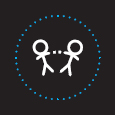
JOYNING
The eternal desire for connection, and the many new ways it can be satisfied.
Could there be a more basic need? People are social animals and will forever enjoy coming together, making connections, collaborating, and sharing experiences. The good news? There have never been more opportunities—in both the “real” and virtual worlds—to cater to, benefit from, or facilitate this basic desire.
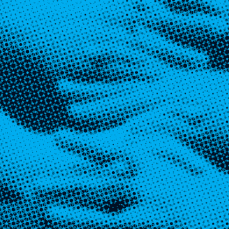
HUMAN BRANDS
Why personality and purpose will mean profit.
Customers are increasingly aware that personality and profit are compatible. They will embrace brands with meaning and personality: that are open, honest, generous, have fun, and stand for something—or more importantly, help consumers tell the world what they stand for.
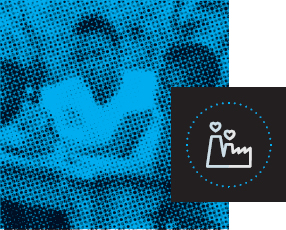
BETTER BUSINESS
Why “good” business will be good for business.
Rising numbers of people are aware of the negative impacts that their consumption has on the planet, society, or themselves. Which is why the only truly sustainable, longterm competitive advantage will be solutions that lessen—or eradicate entirely—those negative impacts.
UBITECH
The ever-greater pervasiveness of technology.
Technology will become ever more ubiquitous, universal, and impossible to live without. Why? Quite simply because people will continue to crave (and build their lives around) the unparalleled “superpowers” that technology offers them: perfect and instant information, absolute transparency, limitless choice, and more.
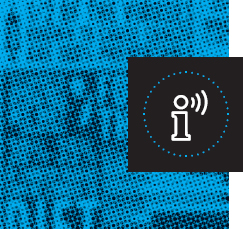
INFOLUST
Why consumers—voracious appetite for (even more) information will only grow.
Forget information overload. People's desire for relevant, useful, timely information is insatiable. It puts them in control. It helps them make the right decisions, or at least makes them feel like they have the power to do so. This is why customers will embrace products, tools, and services that bring them the right information, at the right time, in an understandable, intuitive, and actionable way.
FUZZYNOMICS
The divisions between producers and consumers will continue to blur.
New tools, platforms, and products are making the traditional divisions between consumers and producers increasingly fuzzy. Fueled by the desire for control, involvement, authenticity, self-expression, and/or relevance, the participation mega-trend will continue to grow as people jump into all aspects of the business arena, alongside—if not in the place of—brands.
PRICING PANDEMONIUM

Pricing: more fluid and flexible than ever.
Customers have always been concerned with price, but thanks to a range of new technologies, services, and attitudes, their perceptions of price have become ever more complex. High or low (if not zero), fixed or fluid, universal or personal, businesses must respond by deploying price in ever more flexible ways.

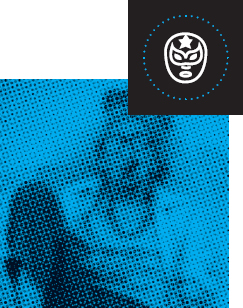
Time to throw out the old demographic models of consumer behavior.
People of all ages are shaking off conventions and constructing their own lifestyles and identities more freely than ever before. This will challenge organizations that still think in terms of consumption patterns that are defined by traditional demographic segments of age, gender, income, family status, and more.

REMAPPED
The epic power shifts in the global economy.
The rebalancing of the global economy, the great convergence, multipolar consumerism. Whatever you call it, the epic rise of emerging economies is not just expanding consumer markets—it's also creating new processes, practices, structures, business models, and brands that are remapping the business arena on a global scale.
A LIVING FRAMEWORK
Spotting trends as they emerge. Tracking trends as they evolve.
Too often, professional trend watchers imply there's some inherent gift they have that enables them to divine the future.
Now, we don't want to be the ones to spoil the party, but the reality is that with a solid Trend Framework and a little commitment, any switched-on business professional can spot and track trends, especially with the wealth of trend information now available to everyone at the tap of a finger (as outlined earlier in this chapter).
The best part of being a trend watcher? The more you do, the easier it gets! Once you have been scanning the business arena for some time, you should find that the vast majority of new innovations you see fit (at least fairly neatly) into the existing trends in your Trend Framework.
However, it's when new innovations don't fit naturally into the trends you have previously identified that things start to get interesting.
By this, we mean:
- When a new innovation that's exciting customers doesn't fit satisfactorily into any of your existing trends.
- When multiple examples repeatedly span the same 2-3 trends.
- When multiple examples of a trend start to point toward a new and specific direction.
These are all signals that you may be witnessing the emergence of a new trend, or the evolution of an existing trend.
The next stage is to question (either online or by asking your network of colleagues) whether similar developments are occurring in other industries and/or markets. How are customers responding? Are similar signals visible across the four types of innovation (vision, business model, product/service, and marketing)? Is there quantitive data supporting and validating the direction of the trend?
As you start to gather more data points, you'll have a better idea of where customers—and their expectations—are headed, and ultimately where the opportunities for you might lie.

> NEXT
Having read this chapter, you now:
- [1] Know how to add context and structure to your insights via a Trend Framework that takes in mega-trends, trends, and innovations;
- [2] Understand the major forces shaping customer behavior and the business arena, and how we've captured them in our Trend Framework; and
- [3] Understand how to develop and maintain your Trend Framework, and how to use it to spot new trends.
Indeed, having read the SCAN section of this book, you're well on the way to becoming a trend watcher! However, this is just the start of the trend journey.
Move on to the next section—FOCUS—to discover how to assess and prioritize the right trends for you.
*Macro trends, mega-trends, micro trends, mini trends. We admit the world of trend classification is somewhat confused (and confusing!). The truth is, there is no definitive answer, and we're not going to even try to claim one here. In the end it doesn't matter, just as long as you're speaking the same language as other stakeholders.


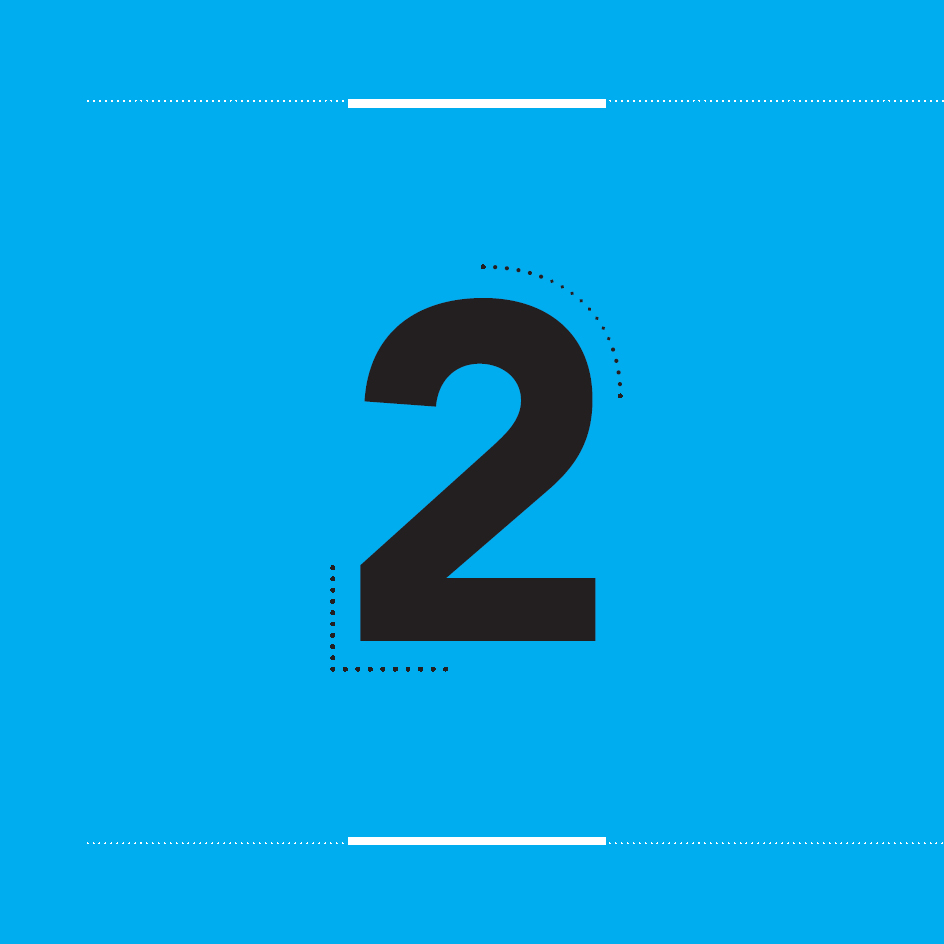
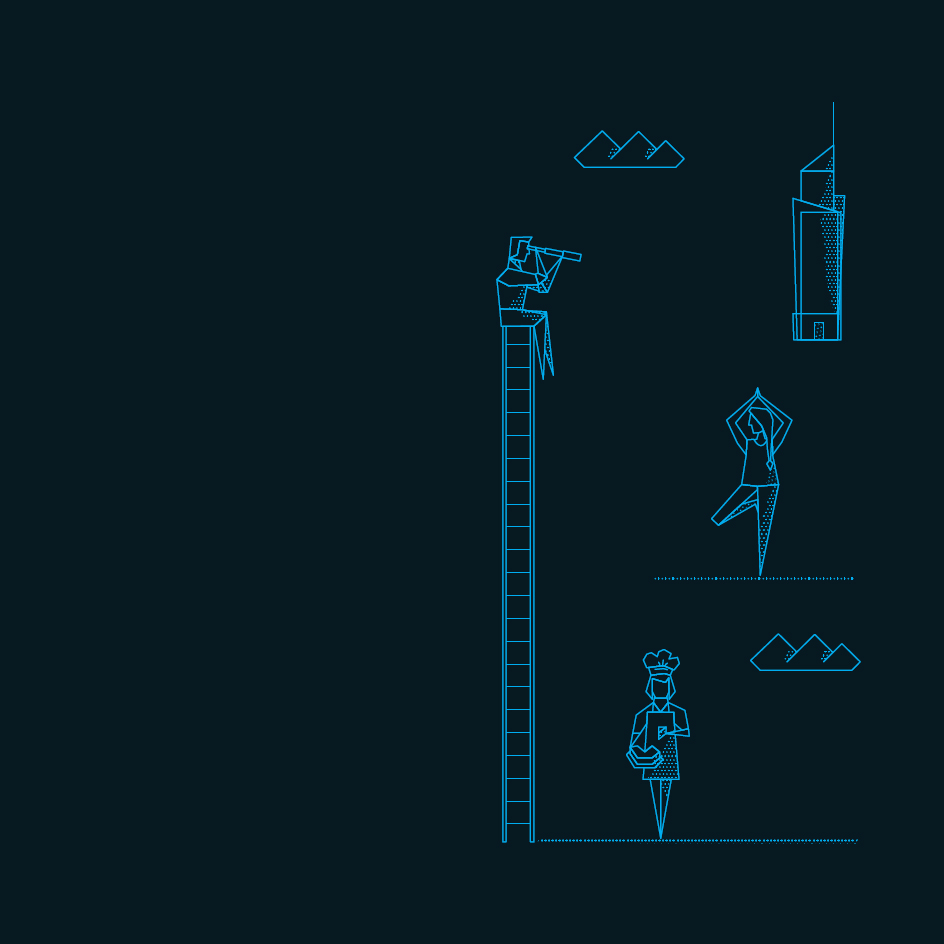
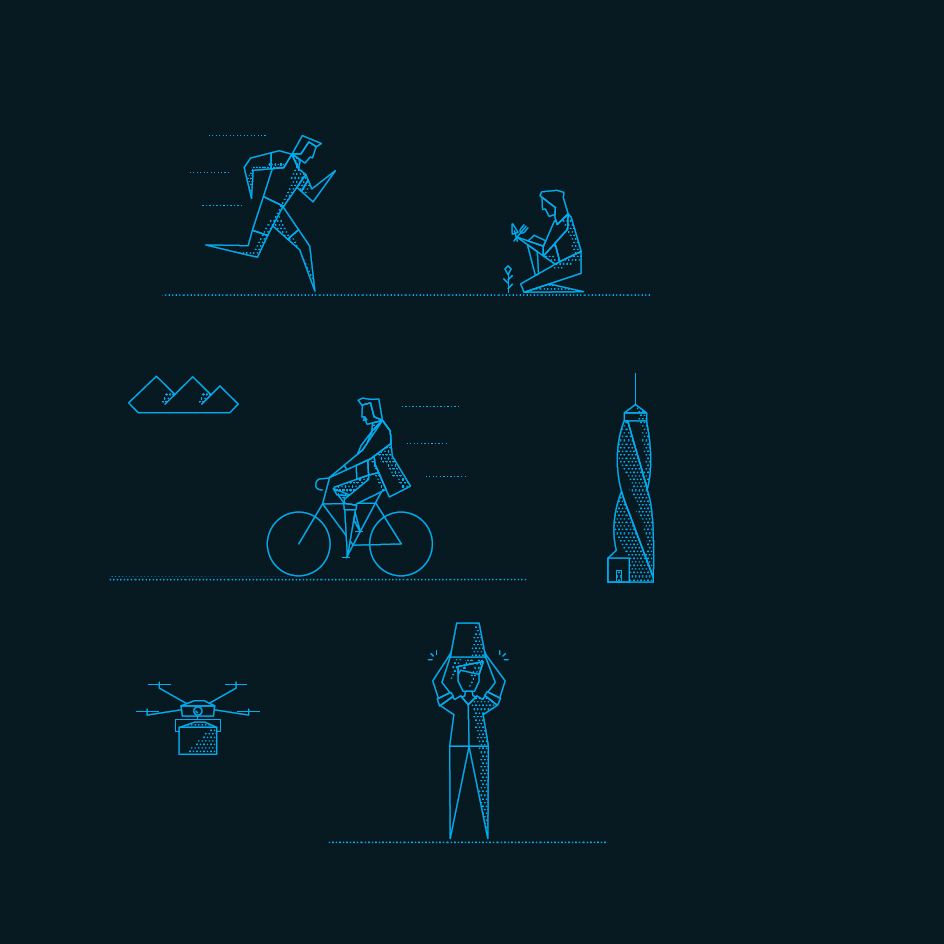
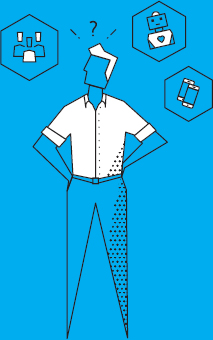

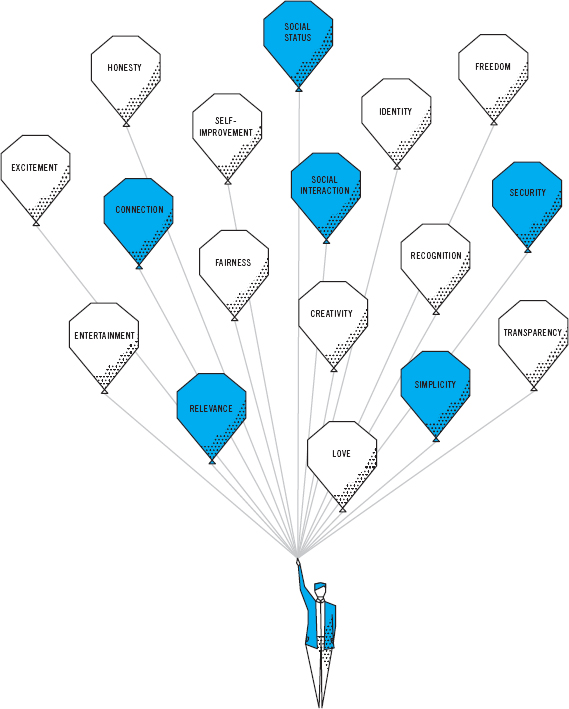
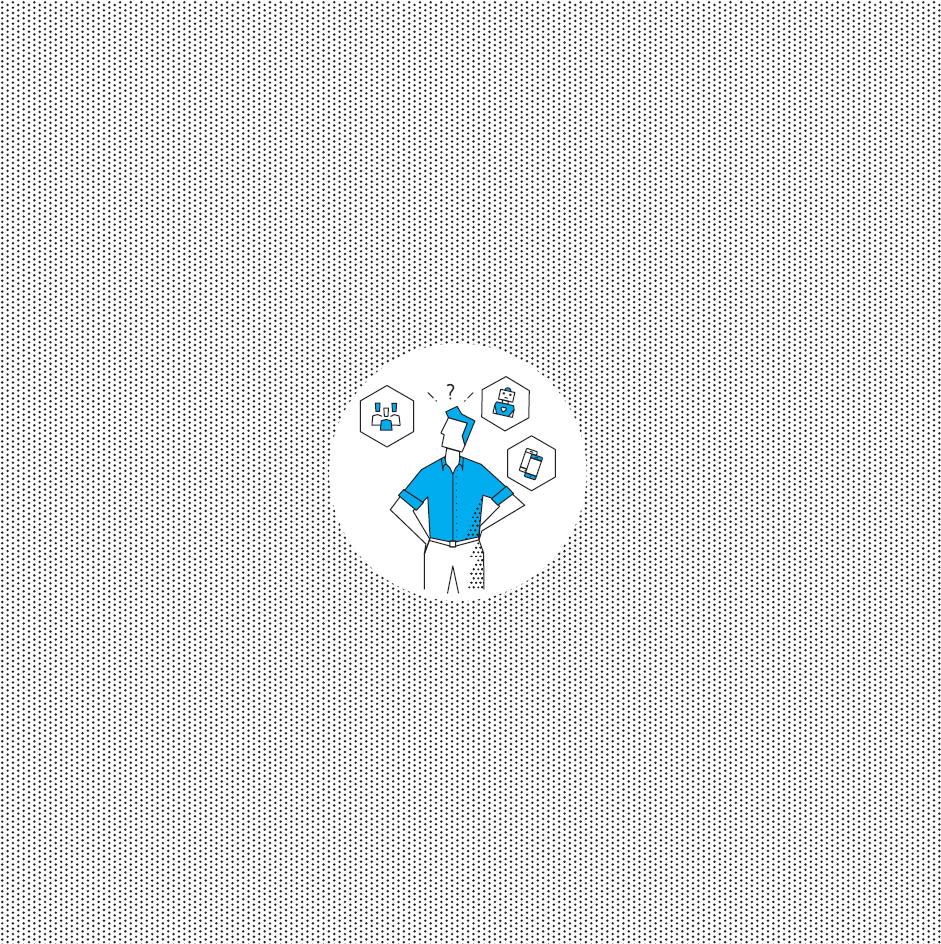


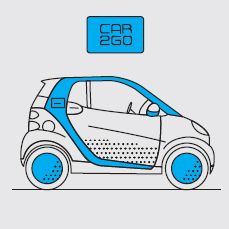
 Traditional media
Traditional media Alerts
Alerts